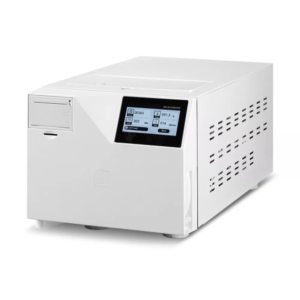Sterilizers X
This machine can be mainly used in dental clinic,pet hospital, beauty salon, pedicure center.

Sterilizers X
Sterilizers X supplier Abu Dhabi
Sterilizers X supplier Dubai
Sterilizers X supplier Sharjah
Sterilizers X supplier Ajman
Sterilizers X supplier Ras Al Khaimah
Sterilizers X supplier Fujairah
Sterilizers X supplier Umm Al Quwain
Sterilizers are essential devices used in various industries, including healthcare, pharmaceuticals, food processing, and laboratories, to eliminate all forms of microbial life, including bacteria, viruses, fungi, and spores. The process of sterilization is crucial in preventing infections, maintaining hygiene, and ensuring the safety of medical instruments, food products, and laboratory equipmen
Steam sterilizers, also known as autoclaves, are one of the most common types. They use high-pressure steam at temperatures between 121°C to 134°C to effectively kill microorganisms. This method is widely used in hospitals, clinics, and laboratories to sterilize surgical instruments, medical devices, and other heat-resistant materials
Another widely used method is dry heat sterilization, which relies on hot air at high temperatures, usually between 160°C to 180°C, to destroy microbial life. This technique is particularly useful for sterilizing materials that cannot withstand moisture, such as glassware, powders, and metal instruments. While it requires more time than steam sterilization, it is highly effective for materials that could corrode or be damaged by moisture
Chemical sterilization involves the use of chemical agents such as ethylene oxide (EtO), hydrogen peroxide, or formaldehyde gas. This method is ideal for sterilizing heat-sensitive materials like plastics, electronic medical equipment, and fiber optics. However, it requires careful handling and adequate aeration after sterilization to remove any residual chemicals that may be harmful
Ultraviolet (UV) sterilization is another effective technique that uses UV light to kill bacteria and viruses by disrupting their DNA. It is commonly used in water purification, air filtration, and surface disinfection. Although it is highly effective, it works best on surfaces directly exposed to UV light, as it has limited penetration capabilities
Plasma sterilization, which employs hydrogen peroxide gas plasma technology, is a more advanced and environmentally friendly method. It is particularly useful for sterilizing delicate instruments like endoscopes and microsurgical tools. This method operates at lower temperatures and leaves no toxic residues, making it a safer option for modern medical equipment
Filtration sterilization is another important method, particularly for sterilizing liquids and air. It uses specialized membrane filters to trap and remove microorganisms without applying heat, making it suitable for pharmaceuticals, vaccines, and laboratory solutions
Sterilization is vital for ensuring medical safety, preventing infections in surgical procedures, and maintaining cleanliness in healthcare settings. It also plays a crucial role in the food industry by ensuring that food and beverages remain free from harmful microorganisms. In pharmaceuticals, sterilization is necessary to maintain the sterility of drugs, vaccines, and laboratory research materials. Laboratories rely on sterilization to prevent contamination and ensure accurate experimental
The choice of sterilization method depends on various factors, including the type of material being sterilized, industry standards, and safety requirements. Advancements in sterilization technology continue to improve efficiency, providing safer environments and higher standards of hygiene across multiple industries


user –
good product